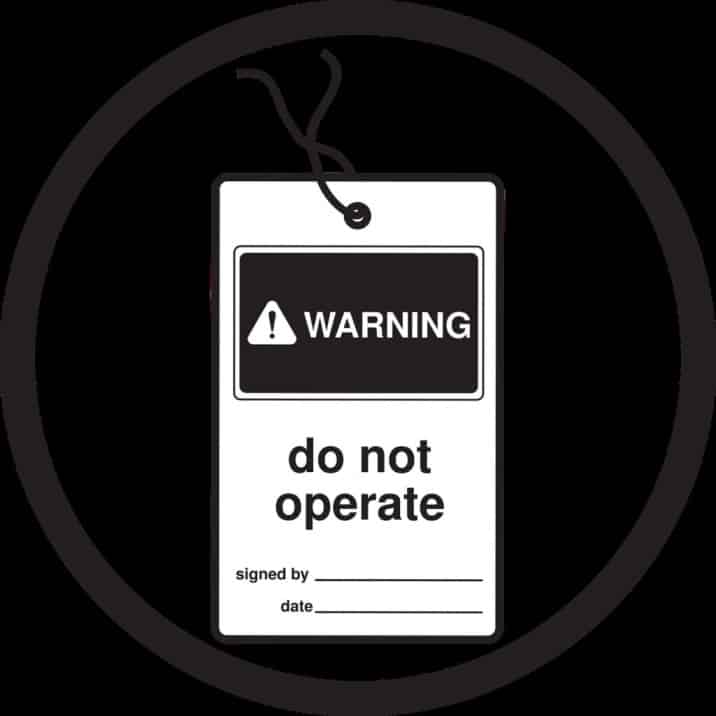
What Is LOTO And Why It Is Important
LOTO is very important in petrochemicals, in order to save the workforce from incidents and accidents as there were several incidents and accidents in earlier era.
Preventive maintenance is a tough task as the crafts do it in when the machinery is in off condition, that is why LOTO rule came into practice.
We know that in the construction industry and petrochemicals there are several types of machinery and equipment.
That needs time to time servicing and maintenance for soundness and smooth running so that work and productivity don’t hamper.
To perform preventive maintenance of the machinery.
You need to switch-off all the power Sources in order to avoid accident and incident.
That is why to prevent man, material, and equipment we need to shut off the machine and place some tag and locks on it for identification purpose so that others can be aware that periodic maintenance is ongoing.
The above process is Lock/out and Tag/out (LOTO).
Types of Energy in Petrochemicals
Electrical:
The Energy that generates because of the electrical parts attached to the machinery.
Mechanical:
It is generating due to the running machinery of the plant.
Chemical:
The Energy that generates due to the chemical reaction inside the vessel or any said closed equipment.
Thermal:
Generates due to the produced heat of the equipment and the machinery.
Hydraulic:
The energy that generates due to the hydraulic pressure of the fluid inside the vessel.
Pneumatic:
Pneumatic energy generates with the air pressure of the equipment
The Procedure of the Lockout and Tagout (LOTO)
- Preparation to shut down the machinery or the said equipment.
- Shut down of the Equipment.
- Isolation of all energy sources.
- Placing Locks & Tags on the [particular equipment and machinery which is undergoing maintenance.
- Releasing Stored Energy.
- Verify Equipment Isolation physically and technically.
What to be considered in preparation for the Shutdown
- What are the types of stored energy?
- Types and potential dangers of stored hazards
- Methods and required steps to control it
- The personnel have to be notified.
How to shut down the Equipment prior to LOTO
- Use basic and normal processes for the shutdown of the equipment and machinery.
- Switch off all the power to the machinery and equipment.
- All the attached control valves to the machinery need to be shut off
- The energy sources need to be de-energized or disabled.
Isolate the Equipment
- Shut off the equipment and machinery from the main breaker.
- Close all the connected valves to the equipment.
- All the process lines need to be disconnected
- The main plugs of the machinery need to be pulled from the main socket.
Attach the Lock and Tag

- All the employees who work on the machinery and equipment need to place their own lock and tag.
- Multiple Locking procedures need to be followed.
Release or block all the Stored Energy before LOTO
- We know that capacitors store charges so all of them need to be discharged.
- It poses great dangers so the springs either need to be blocked or released from their position.
- All the elevated parts of the machinery need to be blocked in order to avoid any dangers.
- The rotating flywheel needs to be stopped to avoid entanglement or any other dangers.
- System pressure needs to be released.
- All the fluids in the pipeline or process line need to be drained.
- The vents connected to the lines need to open to release the gases.
- Let the system cool down in a complete manner prior to the start of the work.
The Equipment Isolation Need to be Verified in LOTO
- Prior to the start of the work all the areas of the machinery must be made clear.
- Cross-check that the locking devices are securely placed in the correct position or not.
- Check all the isolation and make cross verification with the help of the drawing and visuals,
- Initially, a normal start-up has to be made.
- The controls need to be returned to an off position or neutral.
Process of Releasing Equipment from LOTO
- Inspect all the areas prior to release from LOTO.
- Ensure all the machinery are fitted with machine Guards.
- Remove all the tools away from the machinery and equipment.
- Inform all the parties prior to the start-up of the equipment.
- Restore the connection of the system.
- Remove all the locks and tags attached to the equipment.
- Restore the equipment to normal mode.
- Conduct normal start-up.
- The said employee can remove the tag or the one who gets authorization from him can be the Foreman of the Job or the Supervisor.
Conclusion
It is very dangerous to perform preventive maintenance on any equipment or machinery without LOTO.
That is why all the standards of practice should be established and practiced in order to avoid the imminent dangers of stored energy.
This is one the main reasons LOTO must be applied without a third thing coming into mind if the workforce is going for periodic maintenance of any equipment or machinery.
All the requisite and standard safety practices must be followed, keeping an eye on the general safety law without any breach.
FAQ
Ans: –
1. It is used in petrochemicals and electrical in order to make awareness among the workforce that some maintenance work is going on.
2. In order to prevent and save life LOTO is very important in petrochemicals and construction.
Ans: -Only the one who placed the Lock and Tag is entitled to remove it or the one who is authorized by the said person during the course of job.
Ans: -These are good friends one can live without another i.e. When you place a lock on the machinery when maintenance work is ongoing then you will place the tag on which machinery you are working, date, time etc.
Author
M H KARIM
Last updated-8 March 2021